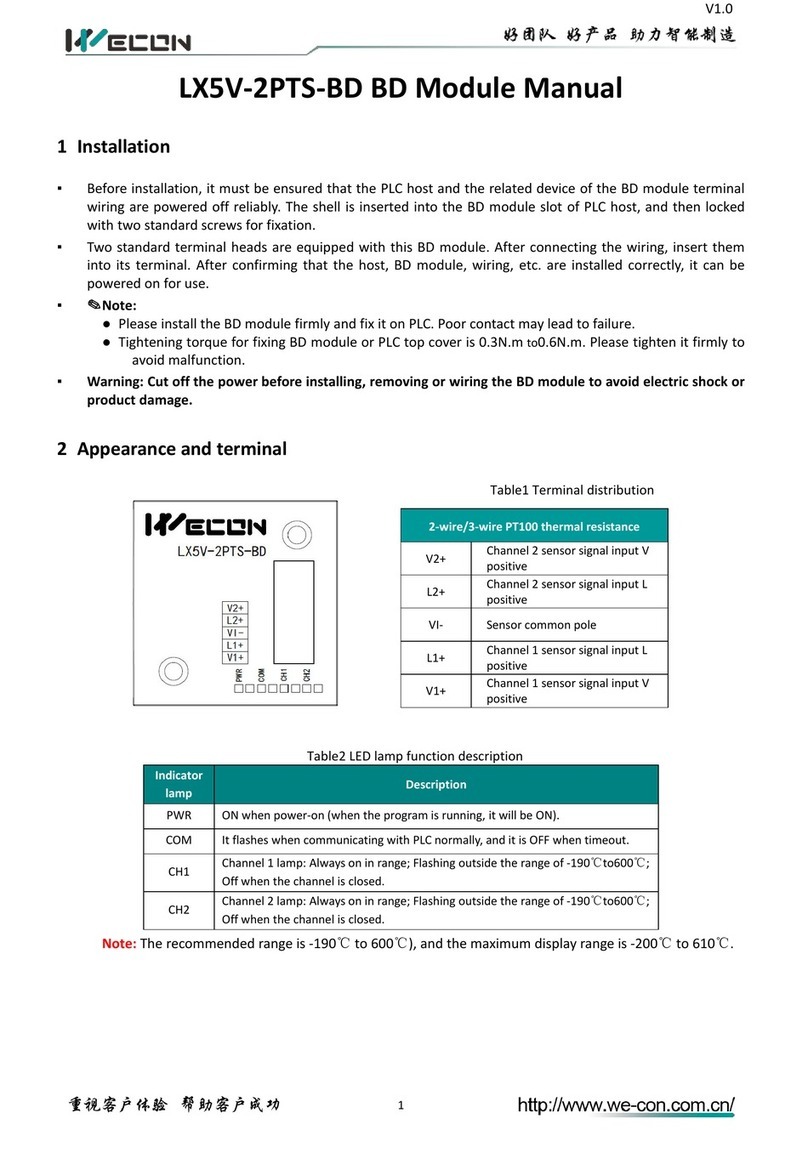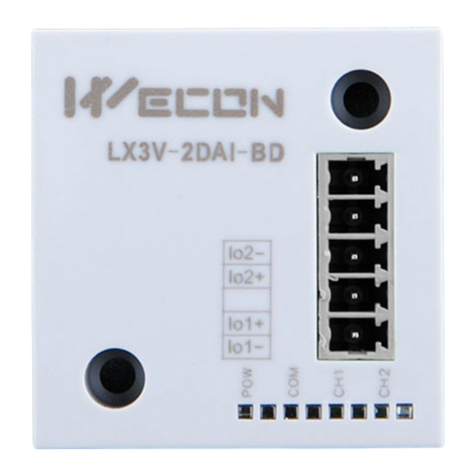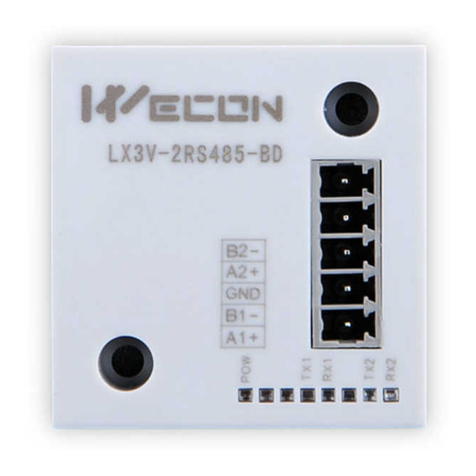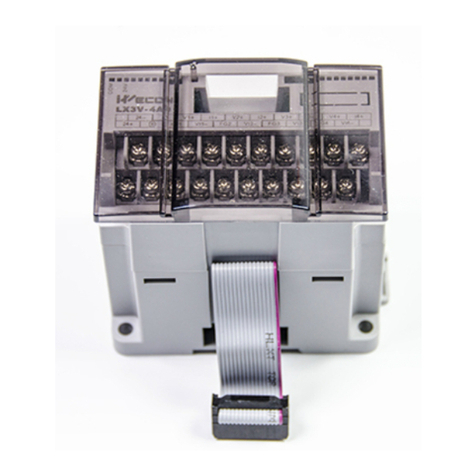LX3V-4DA module
6 WECON Technology Co., Ltd.
8) [BFM #30]
The identification code for a special block is read using the FROM command. The identification code for the
LX3V-4DAunit is K3020.The MPU can use this facility in the program to identify the special block before
commencing any data transfer from and to the special block.
Note: BFM #’s marked E/ (E).
Values of BFM #0, #5, and #21, (marked E) are stored in EEPROM memory of the LX3V-4DA. BFM #10
to #17 are copied to EEPROM when the gain/offset setting command BFM #8, #9 is used. Also, BFM
#20 causes resetting of the EEPROM memory. The EEPROM has a life of about 10,000 cycles (changes),
so do not use programs which frequently change these BFM’s.
A mode change of BFM #0 automatically involves a change of the corresponding offset and gain values.
Because of the time needed to write the new values to the internal EEPROM memory, a delay of 3 s is
required between instructions changing BFM #0 and instructions writing to the corresponding BFM
#10 through BFM #17.
Therefore, a delay timer should be used before writing to BFM #10 through #17.
5. Operation and program examples
If the factory-set I/O characteristics are not changed and the status information is not used, user can
operate the LX3V-4DA using the following simple program. For the FROM and TO commands, refer to the
LX3V PLC Programming Manual.
CH1 and CH2: Voltage output mode (-10V to +10V);
CH3: Current output mode (+4mA to +20mA);
CH4: Current output mode (0mA to +20mA);
Note:
(H2100)→BFM#0
CH1 and CH2: Voltage output,
CH3: Current output (+4mA to +20mA),
CH4: Current output (0mA to +20mA)








































